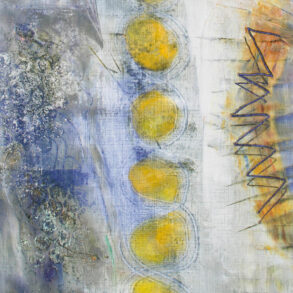Hope is deeply connected with Christmas. For the week of Christmas, the 38th verse in Rudolf Steiner’s Soul Calendar says, “The holy cosmic Word has borne, In the radiance of the heart, The heavenly fruit of hope.” Jesus’ birth is the opening for Christ and his task in the world. The word “hope” appears two more times in the 52 weekly verses: earlier, in October, the 28th verse says that the sun-like power of the soul lends fulfillment to many a wish “whose wings had long been clipped by hope.” A week later, my “summer’s heritage, autumn’s rest and winter’s hope” is formed from the “cosmic Spirit’s source of strength” through the kindling of “the radiance of my thoughts.” It is a movement from overcoming a hope that has become hopeless and to which only fear—even if it is fear of change—clings, via the view of an event expected in winter, to the creation of the highest that hope is capable of.
These three images make it clear that hope oscillates. It can be the last straw—only for a short time; it can inspire or paralyze—sometimes both at the same time; it can be fulfilled or not or only partially. Ernst Bloch’s The Principle of Hope, in which he develops the philosophy of a concrete utopia, was published in three volumes between 1938 and 1947. It is just one prominent example of how far-reaching and multi-layered hope is as an activity or state of mind.
Hope moves between inner activity and passivity, but the two poles ultimately describe the limits where hope can no longer exist. I cannot invest in hope: I cannot put such-and-such amount of effort into something I hope for in order to determine how much I will get back or how likely it is that what I want will happen. Hope is not predictable. And hope falters or becomes over-excited and loses ground if it only moves in the realm of what is desirable. If I am not involved in what I hope for, it becomes poisonous—like when I expect a change or miracle from others and see myself as a victim. In doing so, I overlook the fact that I have put myself in the victim position and am therefore in danger of becoming alienated not only from what I cannot change, but also from my own surroundings and, above all, from myself.
It is an alchemical process. Christmas heralds Christ and thus redemption. When we are witness to this, the foundation of God and the bond with Christ in our own souls, in our own being, is strengthened. It is a kind of melting pot that we put ourselves in, in the process of begetting “hope’s heavenly fruit” through the “holy Cosmic Word” to thus become part of it.
This gives hope strength without having to dictate how things should develop. Its connection with Christmas is not accidental. Love and hope are close relatives; both only thrive when they are unconditional. Any safeguarding, goal-orientation, or self-interest poisons the process of transformation—all these attitudes will, at the very least, seek balance. This means that I have to awaken my interest in the transformation itself and be open to developments that I do not expect and perhaps do not even want.
And because only hope remains in the face of so many global crises, I am called upon to not look away, to stay with it and, since I can hardly take any external action, to remain all the more present internally, even for people who struggle at any level in these crisis situations. But that doesn’t mean that I remain passive: I can become part of the process by refraining from judging, condemning, assuming, or speculating, particularly because I can hardly penetrate or understand all the interrelationships. Active silence expands and opens up a spiritual space, creating a foundation beyond oneself for questions that can lead things further.
Hope is deeply rooted in the fact that the bridge, the connection between the physical and spiritual world, is the human being. This potential exists in every person, regardless of whether I like them or how much their actions frighten me.
Translation Laura Liska
Illustration Gilda Bartel









